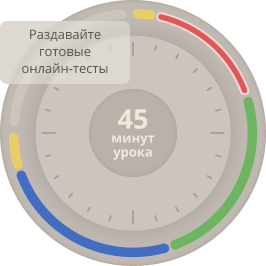

СДЕЛАЙТЕ СВОИ УРОКИ ЕЩЁ ЭФФЕКТИВНЕЕ, А ЖИЗНЬ СВОБОДНЕЕ
Благодаря готовым учебным материалам для работы в классе и дистанционно
Скидки до 50 % на комплекты
только до 20.05.2025
Готовые ключевые этапы урока всегда будут у вас под рукой
Организационный момент
Проверка знаний
Объяснение материала
Закрепление изученного
Итоги урока

How Physio Can Transform Your Post-Injury Recovery
Physiotherapy stands as a cornerstone of effective post-injury recovery, offering a structured, science-backed approach to restoring mobility, strength, and function. Unlike generic rest or over-the-counter remedies, physiotherapy provides tailored interventions that address the unique needs of each injury, from sprains to surgical recoveries. By leveraging targeted exercises, manual therapies, and advanced modalities, physiotherapy accelerates healing, minimizes complications, and empowers individuals to regain control of their bodies. This article explores the transformative power of physiotherapy in post-injury recovery, detailing its benefits, techniques, and long-term impact.
Why Physiotherapy Is Essential for Post-Injury Healing
Injuries, whether from sports, accidents, or surgery, disrupt the body’s natural biomechanics. Without proper intervention, scar tissue, muscle imbalances, or joint stiffness can prolong recovery or lead to chronic issues. Physiotherapy addresses these challenges by promoting optimal healing from the outset. A qualified physiotherapist assesses the injury’s severity, identifies compensatory patterns, and designs a personalized rehabilitation plan. For example, a torn ACL might require a combination of quadriceps strengthening, range-of-motion exercises, and balance training to prevent re-injury. This individualized approach ensures that recovery is not only faster but also sustainable, reducing the likelihood of future setbacks.
Physiotherapy also mitigates pain without over-reliance on medications. Techniques like manual therapy, ultrasound, or dry needling target pain at its source, improving blood flow and releasing tension in affected tissues. By addressing both symptoms and root causes, physiotherapy fosters a holistic recovery process that empowers patients to return to their daily activities with confidence.
Key Physiotherapy Techniques for Injury Recovery
Physiotherapy employs a diverse toolkit to support post-injury recovery, each technique tailored to the injury’s nature and stage. Manual therapy, including joint mobilizations and soft tissue massage, restores flexibility and reduces stiffness. For instance, a frozen shoulder may benefit from gentle manipulations to break up adhesions, allowing pain-free movement. Therapeutic exercises, another cornerstone, rebuild strength and coordination. A patient recovering from a rotator cuff tear might progress from isometric contractions to resistance band exercises, gradually restoring shoulder stability.
Advanced modalities like electrical stimulation or cryotherapy further enhance recovery. Electrical stimulation can activate weakened muscles post-surgery, while cryotherapy reduces swelling in acute injuries like ankle sprains. Hydrotherapy, involving exercises in a warm pool, is particularly effective for lower limb injuries, as it minimizes joint stress while promoting muscle activation. These techniques, combined with ongoing assessments, ensure that rehabilitation adapts to the patient’s progress, maximizing outcomes at every stage.
Long-Term Benefits of Physiotherapy in Recovery
Beyond immediate recovery, physiotherapy delivers lasting benefits that transform how the body functions post-injury. One key advantage is the prevention of secondary complications. For example, a poorly rehabilitated knee injury can lead to altered gait patterns, increasing the risk of hip or back pain. Physiotherapy corrects these imbalances through targeted interventions, ensuring proper alignment and movement mechanics. This proactive approach not only resolves the primary injury but also safeguards overall musculoskeletal health.
Physiotherapy also builds resilience against future injuries. By strengthening supporting muscles and improving proprioception—the body’s sense of position—patients develop better movement control. A runner recovering from Achilles tendinitis, for instance, might incorporate calf raises and balance drills to enhance tendon strength and ankle stability. These exercises translate to improved performance and reduced injury risk during future activities.
Mental health benefits are equally significant. Injuries often bring frustration, fear of re-injury, or loss of confidence. Physiotherapists provide education and reassurance, helping patients understand their recovery journey. Guided progress, such as achieving small milestones like walking without a limp, boosts motivation and fosters a positive outlook, which is critical for long-term adherence to rehabilitation.
How to Maximize Your Physiotherapy Recovery
To fully harness physiotherapy’s transformative potential, commitment and collaboration are key. Patients should adhere to prescribed exercises, even outside clinic sessions, as consistency drives progress. For example, daily stretching for a lower back strain can prevent muscle tightness from derailing recovery. Communicating openly with the physiotherapist about pain levels or challenges ensures that the plan evolves with the patient’s needs.
Incorporating lifestyle adjustments also amplifies results. Proper nutrition supports tissue repair, while adequate rest allows the body to heal. For complex injuries, such as post-surgical hip replacements, integrating physiotherapy with occupational therapy can further enhance functional outcomes, enabling a seamless return to work or hobbies.
Choosing the Right Physiotherapist for Optimal Recovery
Selecting a skilled physiotherapist is critical to unlocking the full benefits of post-injury recovery. Look for professionals with specialized training in the relevant injury type, such as sports injuries or post-operative rehabilitation. Credentials, experience, and patient reviews offer insight into their expertise. A good physiotherapist will prioritize clear communication, setting realistic goals and explaining each step of the process. Clinics equipped with modern tools, like ultrasound or gait analysis systems, can further enhance treatment precision.
Physiotherapy transforms post-injury recovery by combining science, personalization, and patient empowerment. From reducing pain to preventing future injuries, its comprehensive approach delivers results that surpass generic recovery methods. By committing to a tailored physiotherapy plan, individuals can reclaim their strength, mobility, and confidence, achieving a recovery that lasts.
For more information on this, visit










